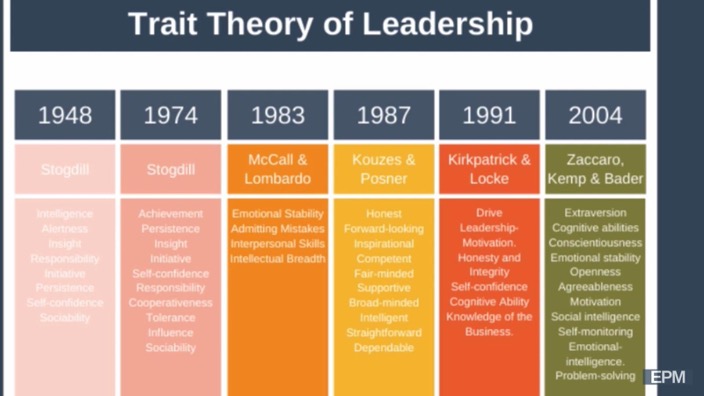Leadership Traits vs. Leadership Attributes: A Comprehensive Analysis
There has been a lot scholars studying leadership traits / attributes. The concept of leadership has been studied extensively, with scholars focusing on various aspects of leadership traits and attributes. This article will explore the differences between these two concepts, providing examples of scholars who have studied each and their contributions to the field.

Leadership Traits
Leadership traits refer to the innate characteristics and personality qualities that make a person an effective leader. Scholars have identified various traits that are commonly associated with successful leadership.
- Ralph Stogdill: In 1948, Stogdill analyzed data from more than 100 studies into leadership traits and found that there weren’t many overlapping traits amongst the different studies[1]. In 1974, he published the “Handbook of Leadership,” which provided a comprehensive review of the literature on leadership traits[4].
- John Adair: Adair identified three essential traits of leadership: unity, purpose, and power. He believed that leaders must be able to create a sense of unity among their followers, have a clear purpose for leading, and be able to exert power when necessary[4].
- Dennis M. Gioia: Gioia’s trait theory of leadership focuses on the role of personality in leadership effectiveness, emphasizing traits such as honesty, trust, and openness[4].
Leadership Attributes
Leadership attributes refer to the broader qualities and characteristics that contribute to effective leadership, encompassing a wider range of skills and behaviors. Scholars have identified various attributes that are crucial for successful leadership.
- James Kouzes and Barry Posner: They conducted between 1983 and 1987 strategic research on the characteristics of effective leaders with a large sample size[2]. Their work emphasized the importance of credibility, clarity of purpose, and competence in leadership.
- McCall and Lombardo: In their book “Off the Track: Why and How Successful Executives Get Derailed,” they explored the factors that contribute to the derailment of successful executives and the qualities that make others excel in their leadership roles[2].
- Kirkpatrick and Locke: These scholars developed the Leadership Competency Framework, which identifies five key areas of leadership: skill in handling tasks, understanding and managing people, initiating structure, modeling the way, and inspiring and motivating others[5].
- Kathy Kramer, David Zaccaro, and Patrick Kemp: In their article “Leadership Traits and Attributes,” they discussed the similarities and differences between trait and attribute approaches to leadership, emphasizing the importance of both approaches in understanding leadership[5].
Comparison of the Two Concepts
The distinction between leadership traits and attributes lies in the focus of the research. Scholars studying leadership traits concentrate on specific innate characteristics and personality traits of effective leaders, while those studying leadership attributes take a broader view, considering elements such as social influence, vision, and the complexities of leadership across different contexts. The former is more concerned with individual qualities, while the latter encompasses a wider range of characteristics and their impact on leadership. However, it’s important to note that the distinction is not always clear, and the terms are often used interchangeably in scholarly research.
Some scholars, like Stogdill, Adair, Gioia, Kouzes, Posner, McCall, Lombardo, Kirkpatrick, and Locke, have focused on specific traits of leadership, while others, like Zaccaro, Kemp, and Bader, have emphasized broader attributes or characteristics of leaders and leadership. The trait approach to leadership, as pioneered by Stogdill and Blake, involves identifying and measuring specific traits that are associated with effective leadership. On the other hand, the attributes approach to leadership, as exemplified by the work of Goleman, Bennis, George, and Kouzes, involves examining the broader characteristics of leaders and their leadership, including emotional intelligence, passion, vision, values, self-awareness, self-expression, authenticity, credibility, clarity of purpose, and competence.
In conclusion, the study of leadership traits and attributes is a rich and diverse field, with scholars focusing on both specific individual qualities and broader characteristics of leaders and leadership. The distinction between the two concepts is not always clear, and further research is needed to better understand the interplay between these different aspects of leadership.
Citations:
[1] https://expertprogrammanagement.com/2021/06/trait-theory-of-leadership/
[2] http://media3.novi.economicsandlaw.org/2017/07/Vol31/12-IJEAL-31.pdf
[3] https://www.sweetstudy.com/sites/default/files/qx/16/12/10/07/comprehensive_leadership_review_-_literature_theories_and_research.pdf
[4] https://www.tlu.ee/~sirvir/Leadership/Leadership%20Attributes/references.html
[5] https://papers.ssrn.com/sol3/papers.cfm?abstract_id=4560190









